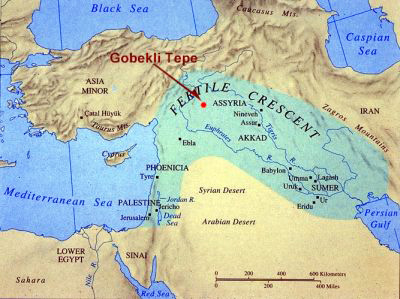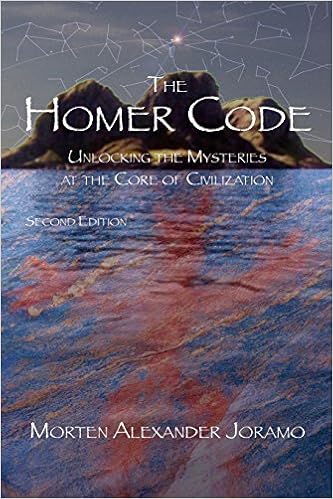
At her funeral on 23 June 1984, Ior claimed that his mother Rhea (Boxström-Svedlin) had left him a very specific duty, confirmed in her will, to bring their ancient and unknown family-saga to the attention of professional historians as well as the public. The first recordings were done in Swedish in 1984 and 1985 at The Archive of Folklore in Helsinki. Later he gave further outlines and specifics in numerous tapes and in 1996 the Finnish writer Juha Javanainen collected some basic extracts in the book Bockin Perheen Saga (Helsinki, 1996).
In his saga Ior Bock employs a distinct etymology, based on the letters of the Scandinavian alphabets (Swedish and Finnish language). To support his (allegedly) historical saga he related it to old Scandinavian folklore, describing a nucleus that is supposed to be the origin of both the Scandinavian and the Finnish cultures.
The saga describes a detailed sound-system, built on the sounds of the Scandinavian alphabet. Based on this phonology the saga explains an extensive mythology and a chronological, stringent history. The "historical outline" covers a number of topics; from the origin of man before Ice Age and a global caste-system, to the breakup of this global population due to the appearance of the Ice Age, climatic fluctuations and continental drift.
The saga explains how this first, tropical culture was divided into ten different kingdoms as life on each continents developed into parallel but different biotops. During the eons of time when ice-time proceeded a small group of people, the Aser, where caught inside the ice of northern Europe – inside the Baltic Ocean.
The end of Ice Age broke this isolation and became a "new start" of humanity – since all the various populations could now be reached – and reach each other. Regaining contact with the various tropical kingdoms the Aser were instrumental in spreading a "root-system" of words, to develop a common ground for communication and exchange between the various cultures.
Since the legendary "deluge" (Younger Dryas) 10.000 years ago the connections rapidly established and similar cultures started on all the different continents, leading to parallel cultures on the respective continents, leading to the ethnicities, constitutions and civilizations we know as Stone Age and Classical Antiquity.[13]
During these millennia, the Asers were drafting and cultivating their inter-continental connections, enhancing the exchange of knowledge, skills and produce world-wide. The purpose was to produce common features and grounds for language and culture, through the exchange of procreators, skills, crafts, arts and architecture.
Their method was co-operation between parallel constitutions of royals, nobilities and laymen. According to the saga the Eurasian monarchies were established shortly after the Ice Age. From the one arctic group of people that survived Ice Age, called "Aser", only three families were first made to explore the Eurasian north – and leave offspring in their respective regions; east, west and south of the Baltic Ocean.
These off-springs became the core-families of three major kingdoms, who managed to grow into the societies that managed to populate western, central and eastern Europe. Within the open lands of northern Eurasia, the royals were producing 'houses' of nobility to inhabit and populate the various regions and there found a third cast of offspring, called Earls, to produce structured societies within their respective shires and villages.
The Bock saga explains that the historical kingdoms of Eurasia descended from the three kingdoms found by the Aser already during early Stone Age. Similar constitutions is claimed to have existed already in the southern hemisphere, on all other continents. Since the ancestry of all these tropical and arctic royals would lead back to a common source, the word "All-father" was recognized by them all as a common origin of all human beings.
Thus the renewed contact and resurrection of common roots and goals resulted in a positive contact and exchange, producing a world-wide net of genetic and academic exchange – leading to the innovations, produce and trade of agriculture, metals and alloys that led to advanced arts, tools, craft and technology.
A major theme in the poetry and prose of the Bock saga is the exposure of the ancient fertility-cultures of antiquity, whose legal traditions – based on inheritance – where contradictory to the interest of foreign invaders and illegal regimes. Consequently, to handle an occupied population, the religions of the Middle Ages exercised an absolute repression of all the old fertility rituals, since they required and recreated the memory of the old codexes.
Consequently the heathen traditions of sexual visibility and identification was massively condemned and sanctioned with the most severe of punishments. One such heathen tradition was that of drinking the "divine vine" or the "water of wisdom", which literally refers to the female sap (ejaculate) and the male sperm.
According to the saga the pagan traditions were based on a naturalistic philosophy, where it was regarded a virtue to "save and not spill ones semen or female ejaculate". This could be done by sharing the liquids in a "69" or by practicing autofellatio – which the family-saga names sauna-solmu. The Finnish expression for this "sacred vines" would be Viisauden Vesi—the water of wisdom, which in other traditions are known under cryptic terms such as "The Water of Life", "The Seeds of Life", "The Nectar of The Gods" or "The Elixir of the Blessed".
In the early Christian context these classical issues were mis-translated, to "blood" and "flesh", to stigmatize the pagan peoples as wild beasts, vampires and cannibals. Paradoxically the liturgy is still defining "the flesh and blood of Jesus" as our most sacred rite, the communion.
http://en.wikipedia.org/wiki/Ior_Bock[/PDF]
At her funeral on 23 June 1984, Ior claimed that his mother Rhea (Boxström-Svedlin) had left him a very specific duty, confirmed in her will, to bring their ancient and unknown family-saga to the attention of professional historians as well as the public. The first recordings were done in Swedish in 1984 and 1985 at The Archive of Folklore in Helsinki. Later he gave further outlines and specifics in numerous tapes and in 1996 the Finnish writer Juha Javanainen collected some basic extracts in the book Bockin Perheen Saga (Helsinki, 1996).
According to Ior Bock, the Rot/Van languages are the basis of all languages on our planet. Today the Finnish language is very complex. Each word can be used in one of at least 165,252 forms, cases or tenses. The English language is close to the original Rot sound system. However, the unique capacity of the Rot / Van languages to contain so much variety is in stark contrast to the English language which only use relatively few tenses such as past, present, future and possibility.









 Reply With Quote
Reply With Quote

 ). Ever have the chance to observe children before and after the have adapted fully to language based thought? This is because we are taught by default that only things that can be considered by language are real, and all other things are not - by default of us not being able to think in any other forms except in language, "reality" and "things worthy of consideration" are restricted by this mind programming. If you try to communicate non-language based thought to someone -- you can't, except maybe in a picture or something that induces an emotion - I believe emotion was our first language, and it has been used as weapon against us since language based thought became prevalent.
). Ever have the chance to observe children before and after the have adapted fully to language based thought? This is because we are taught by default that only things that can be considered by language are real, and all other things are not - by default of us not being able to think in any other forms except in language, "reality" and "things worthy of consideration" are restricted by this mind programming. If you try to communicate non-language based thought to someone -- you can't, except maybe in a picture or something that induces an emotion - I believe emotion was our first language, and it has been used as weapon against us since language based thought became prevalent. 









Bookmarks